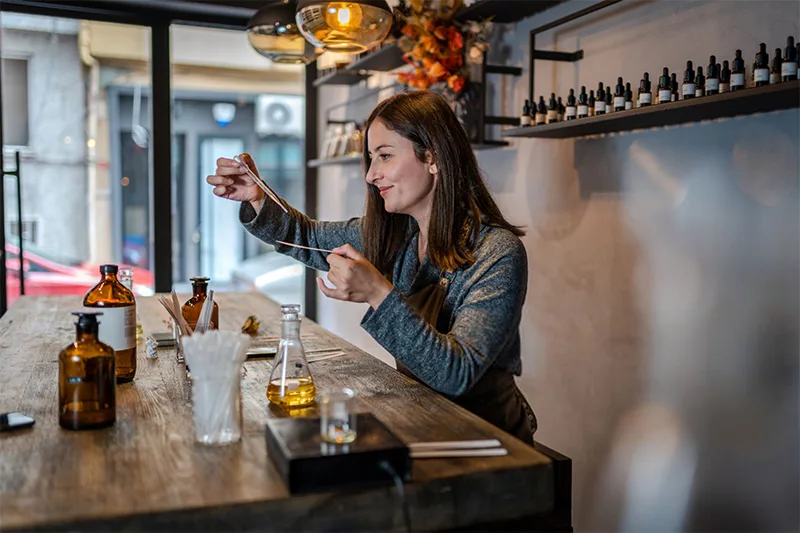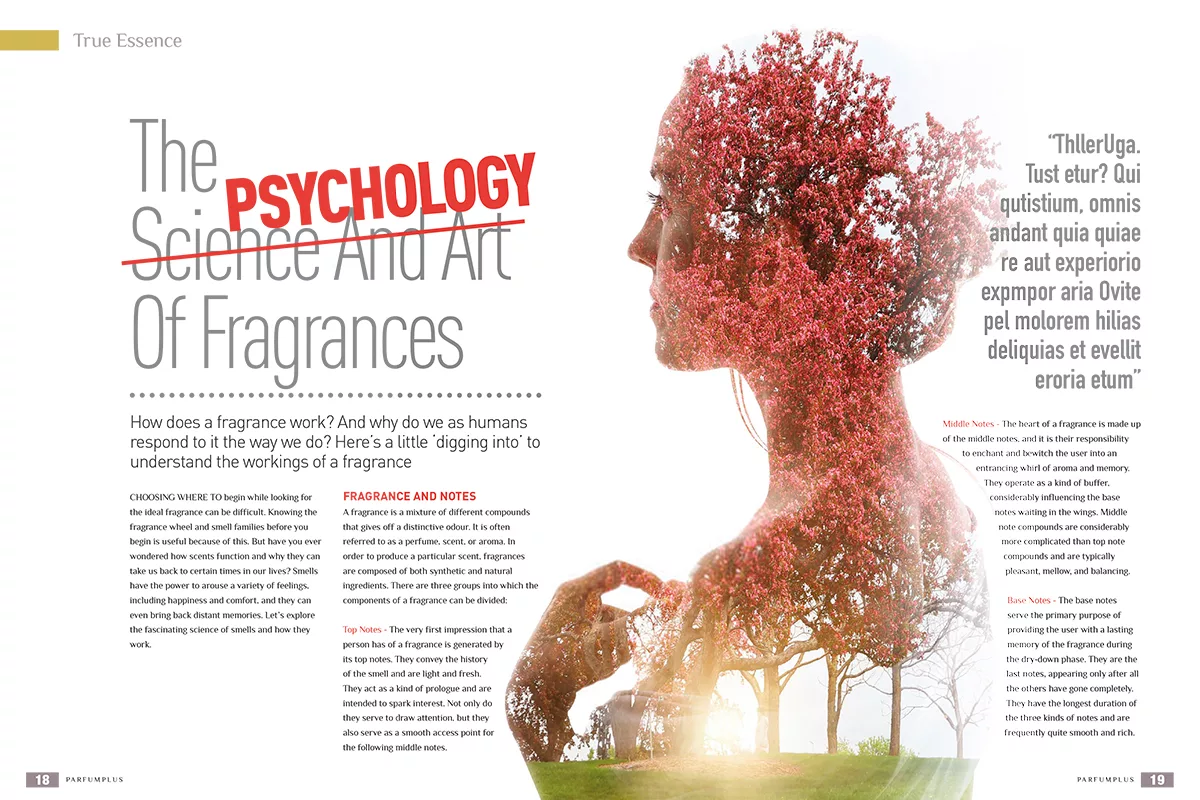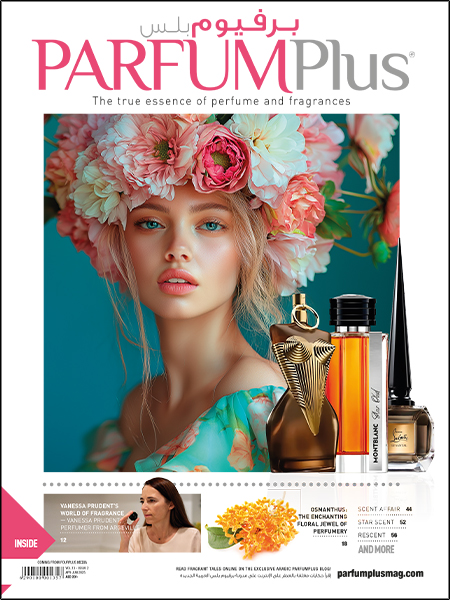Read this post in
 Arabic
Arabic

The Psychology Of Fragrances
How does a fragrance work? And why do we as humans respond to it the way we do? Here’s a little ‘digging into’ to understand the workings of a fragrance,
Choosing where to begin while looking for the ideal fragrance can be difficult. Knowing the fragrance wheel and smell families before you begin is useful because of this. But have you ever wondered how scents function and why they can take us back to certain times in our lives? Smells have the power to arouse a variety of feelings, including happiness and comfort, and they can even bring back distant memories. Let’s explore the fascinating science of smells and how they work.
Fragrance and notes
A fragrance is a mixture of different compounds that gives off a distinctive odour. It is often referred to as a perfume, scent, or aroma. In order to produce a particular scent, fragrances are composed of both synthetic and natural ingredients. There are three groups into which the components of a fragrance can be divided:
Top Notes - The very first impression that a person has of a fragrance is generated by its top notes. They convey the history of the smell and are light and fresh. They act as a kind of prologue and are intended to spark interest. Not only do they serve to draw attention, but they also serve as a smooth access point for the following middle notes.
Middle Notes - The heart of a fragrance is made up of the middle notes, and it is their responsibility to enchant and bewitch the user into an entrancing whirl of aroma and memory. They operate as a kind of buffer, considerably influencing the base notes waiting in the wings. Middle note compounds are considerably more complicated than top note compounds and are typically pleasant, mellow, and balancing. They frequently consist of a gentle blend of floral or fruit tones, and they occasionally have strong spices like cinnamon, nutmeg, or cardamon added to them.
Base Notes - The base notes serve the primary purpose of providing the user with a lasting memory of the fragrance during the dry-down phase. They are the last notes, appearing only after all the others have gone completely. They have the longest duration of the three kinds of notes and are frequently quite smooth and rich.
How Does A Fragrance Work?

Young Perfumer preparing perfume while sitting at table in her own store
How Does A Fragrance Work?
We have a highly developed sense of smell. The aroma molecules that we inhale enter our bodies through the olfactory bulb, which is situated at the back of the nose. Processing fragrance information and communicating with the brain are the responsibilities of the olfactory bulb. When the brain interprets these data, a perception of scent is subsequently created.
The olfactory bulb and the limbic system, a part of the brain that regulates emotions, memory, and behaviour, are interconnected. This connection contributes to the potency of odours. They have the capacity to jog our memories, stir up emotions, and even influence our conduct.
The Psychology of Fragrances
We can change our mind and conduct with the help of fragrances. They are capable of bringing back memories, affecting our emotions, and even altering how we see other people. Studies have revealed, for instance, that wearing a pleasant fragrance increases the likelihood that someone would be thought of as attractive and that perfumes can even affect how we perceive the perception of time.
In the field of marketing, fragrances are frequently utilised to create a particular mood or feeling in customers, showing the power of scents. A luxury hotel, for instance, would use a scent with notes of lavender and vanilla to produce a calming and welcome environment, while a fashionable clothes store might use a scent with notes of citrus and spice to create a dynamic and energising environment.
The psychology of fragrances can be used to your advantage if one knows how to ‘turn on’ the right sentiments in the wearer as well as the ‘smeller’. If you want to feel glamorous or relaxed or just fresh, it’s a little bit easier as it’s you who is the wearer and the smeller. This can become second nature with adequate usage of different scents and then finally choosing the one for your shelf based on your preference.
But what’s a little bit trickier is to judge how your fragrance is perceived by others. This depends a lot on the other person's preferences and normally it’s beyond one’s control. However if you know the other person well, there’s always the advantage of assessing and checking their reactions to your perfumes and then it’s just like being a card player who knows how to play the cards well!

Normally people from the Middle East find woody fragrances very attractive when smelt on the opposite sex. So a musky fragrance would be perfect if a woman or a man wants to appear glamorous and sexy. And then again, in the Middle East, the men use rose on themselves liberally while in Western countries, men might not be too comfortable with rose on themselves but might like it on women.
The psychology of fragrances is too wide a topic to be covered in an article but there have been many who were extremely talented at this. Cleopatra was one of them. Legend has it that the sails of Cleopatra’s boat were coated with fragrance before she set off to sea. The fragrance was diffused through the air, reaching the shore before Cleopatra would.
Finally, perfumes are much more than just scents that are pleasing to the nose. They are complex and potent instruments that have been used to our emotions, memory, and behaviour. So the next time you smell your favourite scent, stop to consider the amazing science and psychology that goes into making it.
Read this post in
 Arabic
Arabic






